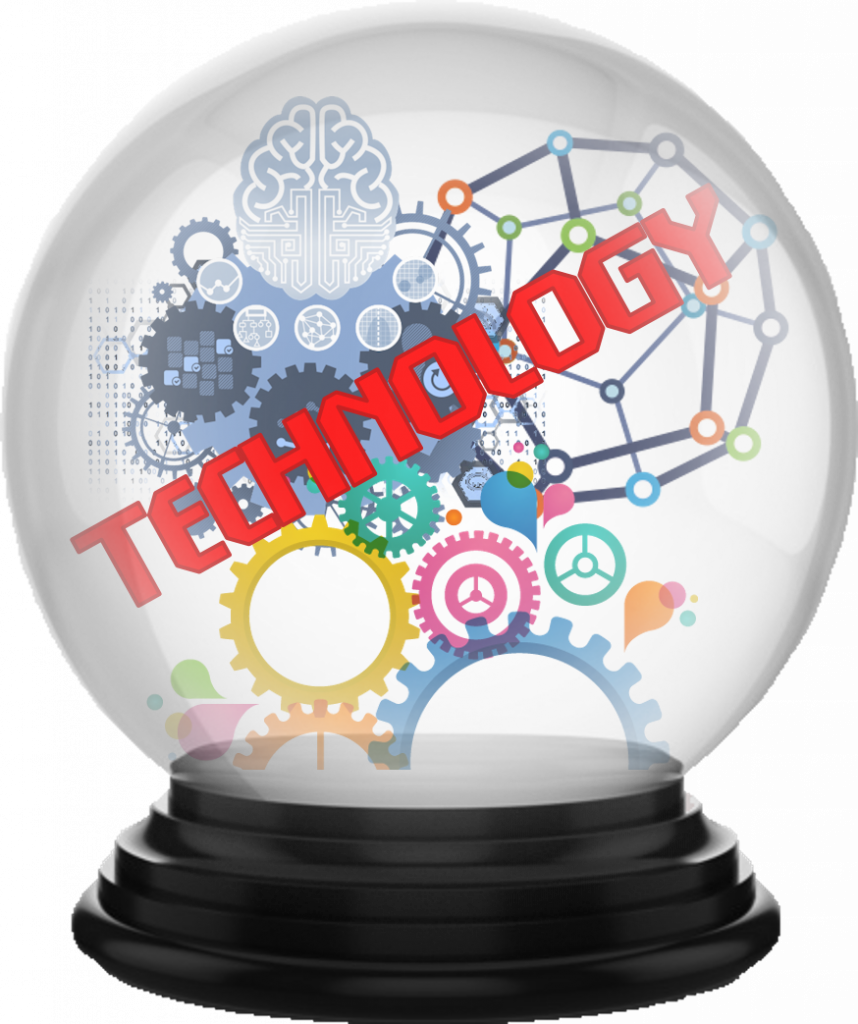Technology is an ambiguous word referring to a wide range of marvelous (and sometimes scary) man-made gadgets. Deciding what technological trends are important depends on the activities in which you or your organization are involved. Regardless of your area of interest, technology of some sort is going to impact it in the years ahead. Prolific inventor Dean Kamen once stated, “Every once in a while, a new technology, an old problem, and a big idea turn into an innovation.” In this article, I want to look at some of the new technologies prognosticators believe will be useful in addressing persistent business problems in the years ahead.
Technologies to watch
A number experts from various organizations have identified what they believe to be the most important technologies for businesses to watch over the coming years. One of those organizations is the CompTIA Emerging Technology Community. The vice chairman of that group, Jay McBain (@jmcbain), a principal analyst for global channels at Forrester Research, notes the CompTIA group “is looking to cut through the consumer hype and build practices around those technologies that provide near-term and profitable extensions to their businesses.”[1] Analysts from other organizations, like Gartner and Forrester, have also identified technologies they believe will have significant impacts on business. Those technologies include:
Digitization. Forrester analysts predict, “In 2019, digital transformation moves from super-wide enterprise efforts to a pragmatic, surgical portfolio view of digital investments with the goal of making incremental and necessary changes to operations. Tangible efforts, such as shifting customers to lower-cost digital channels, launching digital products, monetizing data assets, and automating processes to improve margins, will come to the fore.”[2] Gartner adds, “Digital innovation will soon outpace the ability of many organizations to keep up, and have dramatic impacts on artificial intelligence and related skills, cultural advancement and processes becoming products.”[3]
Internet of Things. The Internet of Things (IoT) is neither a single technology nor a single network. The IoT is part of an ecosystem that begins with sensors embedded in machines (i.e. the “things”). Those sensors generate enormous amounts of data transmitted through machine-to-machine networks (i.e., the IoT) to cognitive platforms with embedded analytics suites. The cognitive platforms gather, integrate, and analyze the data and provide actionable insights that can either be used to help human decision makers or initiate autonomous responses based on pre-determined rules. Forrester predicts, “While the B2C incarnations of IoT are still trying to find their footing, B2B applications of the technology are set to take off in 2019. The business case is too obvious and positive. … B2B IoT will focus on driving efficiencies, connecting the enterprise, expanding the edge, and, in some cases, providing personalized customer experiences.”
Automation. Automation involves both hardware (i.e., robotics) and software (i.e, bots used in Robotic Process Automation (RPA)). According to Forrester, these new “employees” will require new management skills. “In 2019,” Forrester analysts explain, “talent leaders will start to execute two interrelated strategies centered on a robotics quotient (RQ) and a good-to-great hiring and development strategy. RQ will become a core learning and measurement fundamental for employees who direct or work alongside digital workers. Employees will need to design and manage a more robust and complex portfolio of RPA-driven processes; design and harness AI as leaders seek to drive massive efficiencies in complex and costly operations; and use automation to free human capital and the associated costs from the mundane and repetitive tasks.”
Artificial Intelligence. “Gartner predicts that by 2022, at least 40 percent of new application development projects will have AI co-developers on the team.”[4] According to Forrester analysts, “Combined with intelligent tools that move data governance to a more ambient and contextual state, most firms will turn the corner on data governance thanks to AI. … Firms will also expand RPA and proofs of concept to broaden the process, product, or experience scope and better understand the impact of AI. RPA and AI technology innovations will combine to create business value while serving as a test bed for broader implementations of AI.”
Augmented and Virtual Reality. “Gartner predicts that by 2022, 70 percent of enterprises will be experimenting with immersive technologies for consumer and enterprise use, and 25 percent will be deployed for production. This isn’t just virtual reality, but is about ‘flipping the interaction model’ so that systems learn and adapt to humans instead of the reverse. … VR and AR applications [will involve activities] such as training and simulation, marketing, design visualization, and field service.”
Fifth Generation (5G) Wireless. Every telecommunications provider is working on the roll-out of 5G systems. Kalyan Parbat explains, “5G or ‘fifth-generation’ is a fast, wireless broadband technology that will transcend smartphones and connect anything from cars, machines and home appliances at speeds 50-to-100 times faster than present 4G networks. It will offer lower lag times when transferring data.”[5] Everything from smart industries to smart cities will use 5G technology.
Additive Manufacturing (aka 3D Printing). Entrepreneurs Tarika and Varun Bhartiya note, “An ever-increasing demanding consumer base, coupled with limited resources, is forcing industries to innovate and devise smarter ways to break free from inefficiencies, ensure speedy delivery, better quality at a lower cost with less waste. 3D technology has been playing an integral role across industries in driving these changes. Combined with AI, IoT and machine learning, 3D has become a game changer [in the fields of] architecture, engineering, construction, manufacturing, media, and entertainment.”[6]
Autonomous Vehicles. “Gartner believes that autonomous things — such as robots, drones, and autonomous vehicles — will use AI to automate functions previously performed by humans. It predicts that by 2021, 10 percent of new vehicles will have autonomous driving capability, compared with less than 1 percent in 2017. [Gartner Vice President David Cearley believes] we’re already seeing this in other areas, such as mining. … He said what is important is not only the capability of isolated devices, but how these devices are connected and coordinated.”[7]
Distributed Ledger (aka Blockchain). Distributed ledgers are touted as a secure way to exchange data and garner trust. This technology is likely to be used widely in supply chain operations to provide better visibility and reduce the costs of recalls. Gartner warns, however, that blockchain technology could easily run afoul of new privacy regulations. It explains, “Companies that implement blockchain systems without managing privacy issues by design run the risk of storing personal data that can’t be deleted without compromising chain integrity. A public blockchain is a pseudo-anarchic autonomous system such as the internet. Nobody can sue the internet, or make it accountable for the data being transmitted. Similarly, a public blockchain can’t be made accountable for the content it bears.” Privacy is just one of the growing pains distributed ledger technology will suffer in the years ahead.
Quantum Computing. Quantum computing, which leverages the weird world of quantum physics, promises to revolutionize computing. Although interesting breakthroughs on the road to a universal quantum computer are regularly announced, Daryl Plummer, a Vice President at Gartner, notes, “Quantum computing has another 10 to 15 years before it revolutionizes computing.”[8] If and when such a computer is created, Plummer predicts, “Industries like big pharma will be disrupted.” Cearley agrees. He notes, “Quantum computing is still nascent, but … organizations need to be monitoring what is going on in the category. Early adopters may use it in areas such as optimization, material science, chemistry, and eventually, cryptography. But … people shouldn’t buy into all of the hype, because there is a real problem with things such as decoherence, and it won’t be until between 2023 to 2028 that quantum computing begins to create meaningful work.”
Concluding thoughts
The Bhartiyas conclude, “Change and transformation are the only constants, always driving us into the future, right from the time fire was discovered [and] the wheel was invented. Industries have been undergoing massive transformation right from the industrial revolution. It is the pace of change that is now much faster. Collaboration and automation are happening across industries, using technological trends like artificial intelligence (AI), cloud computing, mobile technology [which are] improving decision making [along with] performance and efficient use of limited resources. … Abraham Lincoln rightly said, ‘The best way to predict future is to create it’.” Although the above list is not exhaustive, it does provide a glimpse into how businesses are trying to create a better future.
Footnotes
[1] David Weldon, “10 top technology trends to watch in 2019,” Information Management, 12 October 2018.
[2] David Weldon, “7 top technology trends that will shape business in 2019,” Information Management, 19 November 2018.
[3] David Weldon, “Gartner’s top 10 tech predictions for 2019 and beyond,” Information Management, 22 October 2018.
[4] Michael J. Miller, “Gartner’s Top 10 Strategic Technology Trends for 2019,” PC Magazine, 16 October 2016.
[5] Kalyan Parbat, “How 5G technology can play crucial role in agricultural growth and smart cities initiative,” Gadgets Now, 7 April 2018.
[6] Tarika and Varun Bhartiya, “The Future of Things,” Entrepreneur India, 10 November 2018.
[7] Miller, op. cit.
[8] Samantha Ann Schwartz, “7 ‘scary’ and disruptive technologies to watch out for,” CIO Dive, 18 October 2018.




